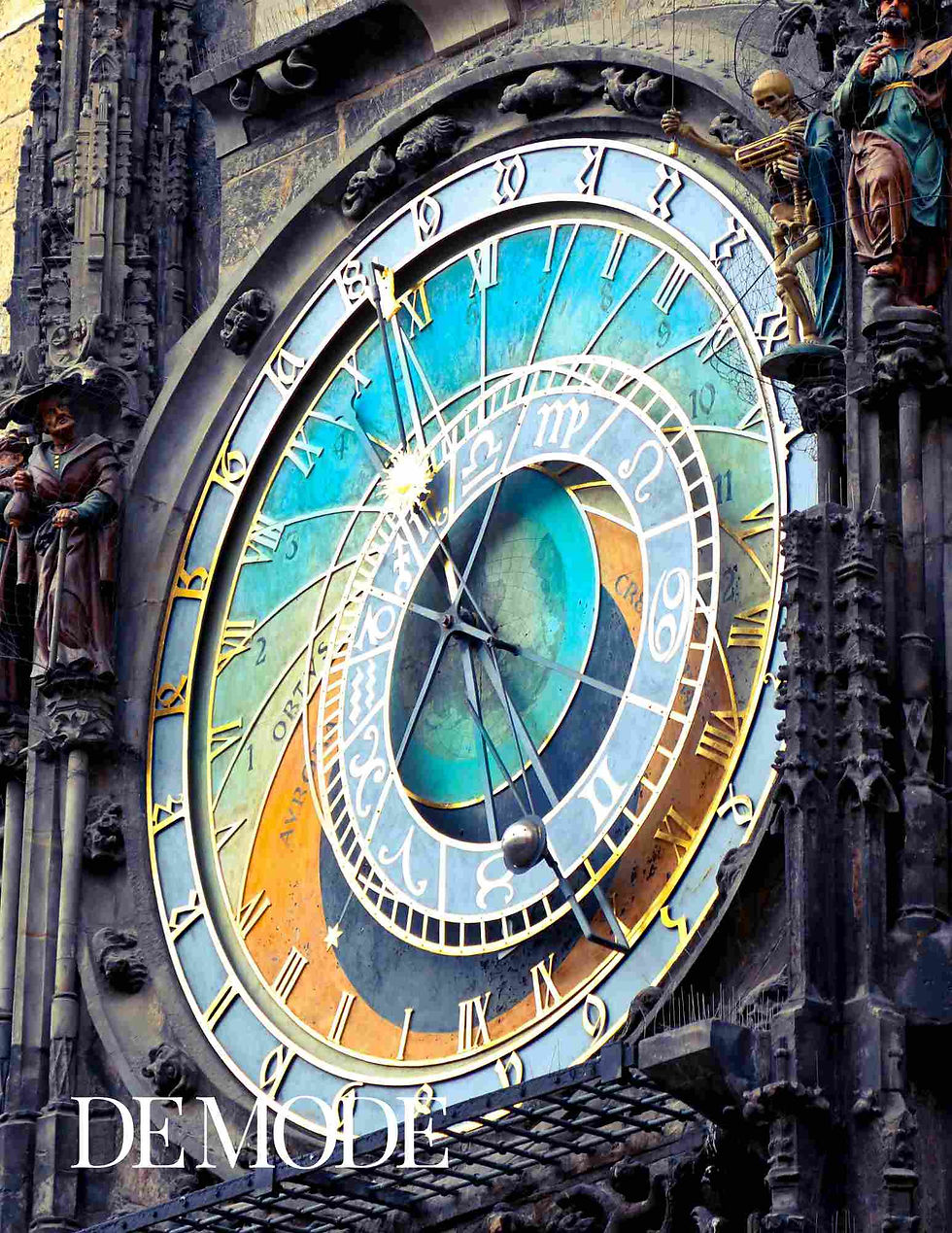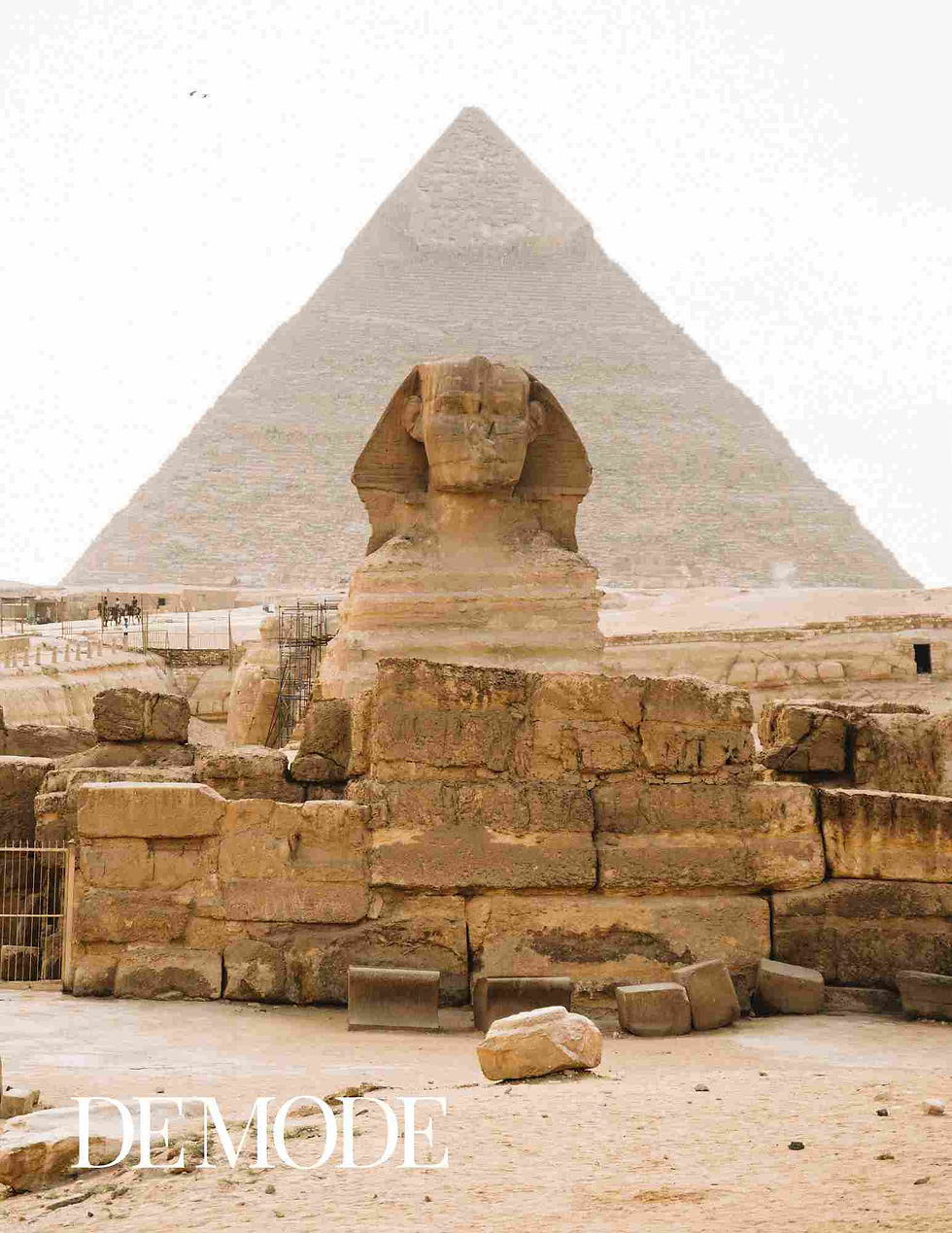"DOCUMENTING HISTORY THROUGH PHOTOGRAPHY": DE MODE GLOBAL
- DE MODE

- Aug 2, 2024
- 5 min read
ORIGINALLY PUBLISHED IN DE MODE | PHOTOGRAPHY
Article Published on: 02ND AUG 2024 | www.demodemagazine.com
Photography, since its inception in the 19th century, has played a pivotal role in documenting history. Unlike written records or oral traditions, photographs provide a visual account of events, offering an immediate and compelling connection to the past. Through the lens, photographers capture moments that become historical artifacts, preserving them for future generations. This powerful medium transcends time, providing an authentic and often unfiltered glimpse into the lives, cultures, and events that shape our world.
The Evolution of Historical Photography
The journey of photography as a historical document began with early pioneers like Louis Daguerre and William Henry Fox Talbot. Their innovations in the 1830s and 1840s made it possible to capture images permanently. The advent of the daguerreotype and calotype processes marked the beginning of photography as a tool for recording history.
The Civil War and Early Documentary Photography: One of the earliest examples of photography's role in documenting history is its use during the American Civil War. Photographers like Mathew Brady and Alexander Gardner captured haunting images of battlefields, soldiers, and the aftermath of conflict. These photographs provided an unprecedented visual record of the war, bringing its harsh realities to the public.
The Great Depression and Social Documentary: During the Great Depression, the Farm Security Administration (FSA) commissioned photographers to document the plight of American farmers. Photographers like Dorothea Lange, Walker Evans, and Gordon Parks produced iconic images that highlighted the struggles and resilience of people during this period. Lange's photograph, "Migrant Mother," remains one of the most enduring images of the era.
World War II and Photojournalism: World War II saw the rise of photojournalism, with photographers like Robert Capa and Margaret Bourke-White capturing the war's brutal and heroic moments. Their work not only documented the conflict but also humanized it, providing a personal and emotional connection to the events unfolding on the global stage.

The Impact of Photography on Historical Documentation
Photography's ability to document history has had profound impacts on society, shaping our understanding of events and influencing public opinion.
Creating an Emotional Connection: Photographs have the power to evoke emotions and create a deep connection with the viewer. Images of historical events, such as the liberation of concentration camps during World War II or the Civil Rights Movement in the United States, evoke empathy and awareness, making the past more relatable and tangible.
Authenticity and Objectivity: Unlike written accounts, which can be subjective and influenced by the author's perspective, photographs provide a seemingly objective record of events. While the photographer's choices still play a role, the image itself serves as a direct visual representation of a moment in time.
Raising Awareness and Sparking Change: Historical photographs have often been catalysts for social and political change. Images of the Vietnam War, such as Nick Ut's "Napalm Girl," shocked the world and contributed to growing anti-war sentiment. Similarly, photographs of the Civil Rights Movement, like those of police brutality in Birmingham, Alabama, galvanized support for the cause.
Preserving Cultural Heritage: Photography has also played a crucial role in preserving cultural heritage. Ethnographers and anthropologists have used photography to document indigenous cultures, traditions, and rituals, providing valuable records that help preserve and understand cultural diversity.
Techniques and Challenges in Historical Photography
Documenting history through photography requires not only technical skill but also a keen understanding of the context and significance of the events being captured. Photographers face various challenges in this endeavor.
Technical Mastery: Understanding camera settings, composition, and lighting is essential for capturing high-quality images. Historical photographers often worked under difficult conditions, using bulky equipment and long exposure times, which required considerable skill and patience.
Access and Safety: Gaining access to historical events, especially in conflict zones or politically sensitive areas, can be challenging and dangerous. Photographers must navigate logistical and security issues to capture the necessary images.
Ethical Considerations: Documenting history raises important ethical questions. Photographers must balance the need to capture truthful, impactful images with respect for the dignity and privacy of their subjects. The depiction of suffering and trauma, in particular, requires sensitivity and ethical responsibility.
Context and Narrative: Providing context is crucial for historical photography. An image alone can be powerful, but accompanying information—such as captions, dates, and background stories—enhances understanding and ensures the photograph's historical accuracy.

Iconic Historical Photographs
Certain photographs have become iconic, symbolizing significant historical events and shaping collective memory. These images serve as powerful reminders of our past and continue to influence our understanding of history.
Raising the Flag on Iwo Jima: Joe Rosenthal's photograph of U.S. Marines raising the flag on Mount Suribachi during the Battle of Iwo Jima is one of the most recognizable images of World War II. It symbolizes the bravery and sacrifice of soldiers and has become an enduring symbol of American patriotism.
The Fall of the Berlin Wall: The photograph of jubilant Germans dismantling the Berlin Wall in 1989 captures the momentous occasion of the wall's fall, symbolizing the end of the Cold War and the triumph of freedom and unity.
Tank Man: The image of an unidentified man standing in front of a line of tanks in Tiananmen Square in 1989, captured by Jeff Widener, has become an enduring symbol of resistance and courage in the face of oppression.
V-J Day in Times Square: Alfred Eisenstaedt's photograph of a sailor kissing a nurse in Times Square on V-J Day in 1945 encapsulates the joy and relief of the end of World War II. The spontaneous celebration captured in this image resonates with the collective sense of victory and hope.
The Future of Historical Photography
As technology continues to advance, the ways in which we document and preserve history through photography are also evolving.
Digital Photography and Archiving: The transition from film to digital photography has made it easier to capture, store, and share images. Digital archives and online platforms allow for widespread access to historical photographs, making it possible for people around the world to explore and learn from these visual records.
Citizen Journalism: The rise of smartphones and social media has democratized photography, allowing ordinary people to document historical events in real-time. Citizen journalists play an increasingly important role in capturing and disseminating images of significant moments, contributing to a more diverse and inclusive historical record.
Preserving and Restoring Historical Photographs: Advances in digital restoration techniques enable the preservation and restoration of old and damaged photographs. This ensures that historical images can be preserved for future generations, maintaining their clarity and impact.
AI and Image Analysis: Artificial intelligence and machine learning technologies are being used to analyze and categorize historical photographs, making it easier to organize and search large archives. These technologies also aid in uncovering new insights and connections within historical records.

Conclusion
Photography has become an indispensable tool for documenting history, offering a visual record that complements written and oral traditions. Through the lens, photographers capture the essence of moments that shape our world, providing a tangible link to the past. From the haunting images of war to the celebratory moments of peace, historical photographs evoke emotions, raise awareness, and preserve cultural heritage. As technology advances, the future of historical photography holds even greater potential for capturing and understanding the complexities of our shared history. By continuing to document the present, photographers ensure that future generations will have a rich and vivid tapestry of images to learn from and reflect upon.



Comments